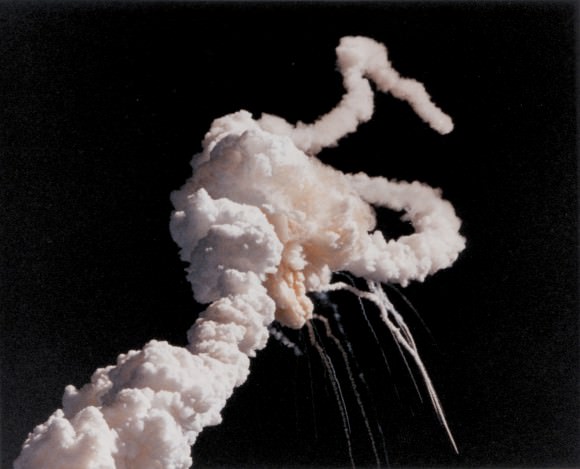It was on this day (Jan. 28) in 1986 that stunned viewers across the world saw the
Challenger space shuttle explode
on television. The broadcast (you can see CNN's above) was being carried all over the place because the crew included the first teacher in space, Christa McAuliffe. The planned six-day mission, however, lasted just over a minute before catastrophe occurred.
Flying aboard mission 51-L were commander Francis "Dick" Scobee, pilot Michael Smith, mission specialists Judith Resnik, Ellison Onizuka and Ronald McNair, and payload specialists Gregory Jarvis and McAuliffe. The physical cause of the explosion was traced back to a faulty O-ring on one of the shuttle's external boosters, which weakened in the cold before launch and then failed, leading to the explosion about 72 seconds after launch.
Other factors were cited as well by journalists and the
Rogers Commission
, such as NASA's desire to keep to what outsiders said was an unrealistic, quick-moving launch schedule that saw shuttles leave the ground every few weeks to carry commercial and military payloads. NASA and contractor Morton Thiokol made changes to the boosters, and NASA further changed the flight rules and other procedures in response to the disaster.
There are many memorials to the fallen crew, but one of the most cited in education is the 40 Challenger Learning Centers that are located in the United States, Canada, United Kingdom and South Korea. The network was founded by June Scobee Rogers (the widow of commander Scobee) and
includes participation from other Challenger family members
. Their goal is to "give students the chance to become astronauts and engineers and solve real-world problems as they share the thrill of discovery on missions through the Solar System," the website states.
Challenger's anniversary comes in a week that includes other tragic anniversaries, including the Apollo 1 pad fire that claimed three astronauts' lives (Jan. 27, 1967) and Columbia shuttle breakup that killed seven (Feb. 1, 2003). Other astronauts have died in training accidents; you can see a list at the
Astronaut Memorial Foundation
. Additionally, four cosmonauts died in spaceflight: Vladimir Komarov (
Soyuz 1
on April 24, 1967) and Georgi Dobrovolskiy, Viktor Patsayev, and Vladislav Volkov (
Soyuz 11
on June 30, 1971).
[caption id="attachment_108682" align="alignnone" width="580"]
The Challenger space shuttle a few moments after the rupture took place in the external tank. Credit: NASA[/caption]
 Universe Today
Universe Today

